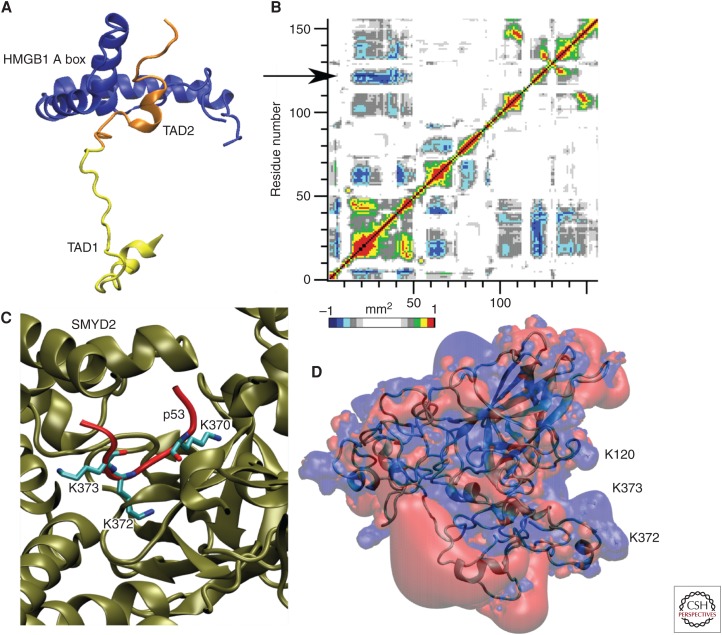Figure 6.
Examples of molecular partners of p53 with different biological roles. (A) Binding of the HMGB1 A box (blue) with TAD2 influences the p53 (orange) binding with DNA (not shown). (B) Long-range communications between p53 transactivation domains (TADs) and DNA-binding domains (DBDs) have been observed in the full-length molecular dynamic (MD) simulation with an anticorrelation motion (highlighted by the arrow) that structurally connect TADs with the Lys120 region in DBD. Red, correlation motion; blue, anticorrelation motion (see color legend). (C) Among the posttranslational modifications, methylation of lysine residues in CTD (carboxy-terminal domain) plays an important role. Lys370 is specifically methylated by SMYD2. (D) Lysine residues are important also for DNA binding. The most stable conformations in the eigenvector 1–2 essential subspace present a positive charged iso-surface participated by Lys120, besides the CTD lysines.

